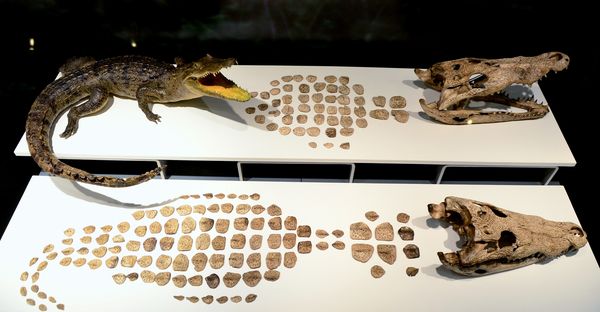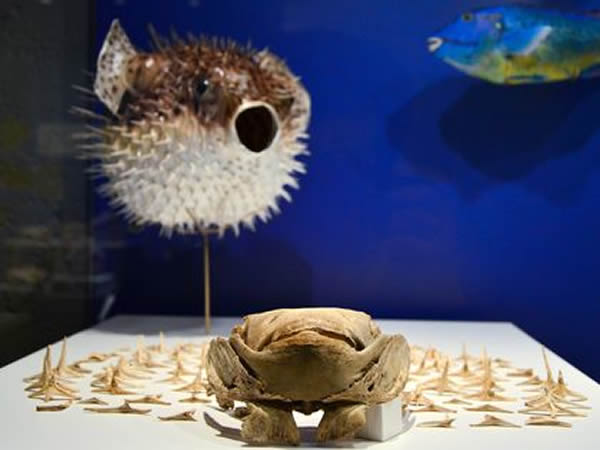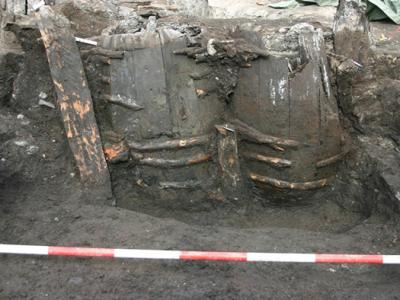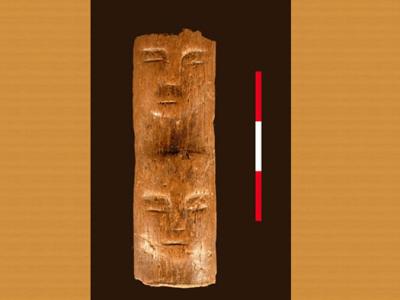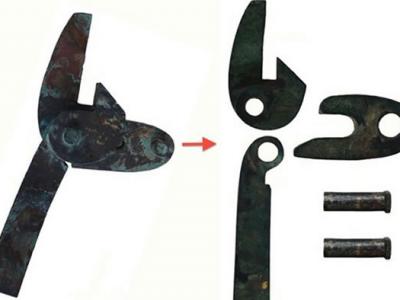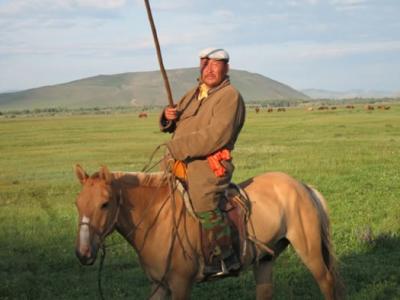More Than 400 Animals Offered to Aztec Gods
A museum exhibits the bones of crocodiles once offered to Aztec gods.
Archaeologists have identified more than 400 species of animals among offerings found at the site of Tenochtitlan, the ancient capital of the Aztecs.
In this great city, the pyramid now known as the Templo Mayor towered above a ceremonial precinct. Beginning in the 14th century, the Aztecs made offerings to their gods there, ritually interring the bodies of animals that held great symbolic meaning for them.
Today the ruins of this holy space lie in the heart of Mexico City. Archaeologists have labored there for more than three decades, uncovering a wealth of information about the culture that Spanish conquistador Hernán Cortés encountered when he marched into central Mexico in 1519.
Some 160 offering deposits have come to light so far, according to a recent report from Mexico's National Institute of Anthropology and History (INAH). About 60 of these included animals, some native to the area and others probably acquired through tribute or trade. The offerings, experts believe, were made between 1440 and 1520, likely to mark new construction phases of the Templo Mayor and nearby sacred buildings. They were dedicated to the two deities whose shrines stood beside each other atop the pyramid—Tlaloc, the god of rain, and Huitzilopochtli, the god of war.
Here's a rundown of the creatures—finned, feathered, fur-covered, shell-dwelling, and scaly—described by INAH biologist Norma Valentín Maldonado in a recent lecture at the Museum of the Templo Mayor:
Fish and Shellfish
Mollusks were deposited in the greatest numbers. Experts have identified more than 300 species, from both the Atlantic and Pacific oceans. Fish, mostly from reefs in the Atlantic, were the second most numerous at 60 species. These creatures likely represented the underworld, a watery domain in the Aztec cosmos.
Aztec offerings included 60 species of fish, symbols of the underworld.
Photograph courtesy Héctor Montaño, INAH
Fowl
The twenty-six species of birds sacrificed included doves, quail, herons, hummingbirds, owls, hawks, turkeys, ducks, grouse, golden eagles, and roseate spoonbills, all of which lived in the area year-round or migrated there in winter. Toucans, quetzals, and woodpeckers came from elsewhere. Each species probably had a special meaning in the Aztec worldview. The golden eagle, for instance, was associated with the sun because it soars so high in the heavens. Today the bird appears on the Mexican flag in homage to the country's Aztec heritage.
Reptiles
Six kinds of turtles have been found. One, identified as Trachemys scripta, was native to the tropical rivers in what are now the states of Tabasco, Campeche, and Chiapas. Two lived in the Tenochtitlan region. Three came from the coasts of Veracruz and Yucatán.
The six kinds of snakes found included a species of rattler, Crotalus colossus, that was abundant in the region.
Four kinds of lizards have been counted, all local. But the two species of crocodile came from coastal areas—one from swamps near the Gulf of Mexico, the other from rivers near the Pacific Ocean.
Mammals
Big cats stood out in this category. Archaeologists counted 13 pumas, thought to represent the sun because of their golden fur. The two jaguars—imported from tropical regions to the south—are thought to be linked to the night because their fur was colored like a dark sky blotched with stars. Six wolves were also included in the offerings.
Among the creatures with spectacular coats, experts found evidence of an ancient form of taxidermy. Some skeletal remains had just a few key elements—facial bones, wrist bones and claws, and the last vertebrae of the tail, for instance—which were probably combined with a sleek pelt to produce a lifelike figure for eternity.
Examples of the offerings are now on exhibit at the Museum of the Templo Mayor, where the gallery of flora and fauna reopened last month after an extensive renovation. To visit:
Address
8 Seminario Street
Centro Histórico
Mexico City, Mexico
Metro stop
Zócalo
Hours
9 a.m. to 5 p.m., Tuesday through Sunday
Entry fee
51 pesos, free on Sundays
Audioguides
50 pesos
A. R. Williams
National Geographic
Published June 17, 2013
